Don't wanna be here? Send us removal request.
Text
Let yourself be cringe in your worship!!!
The Gods don’t find you embarrassing. The Gods don’t care about seeming cool and professional for the approval of others.
Make that fucking aesthetic photo collage for Aphrodite with cute pics you found on Pinterest .
Dress up like Hermes and go for a damn walk.
Collect random stones you think are cool and put them on your altar.
Put that photo of that cartoon character that reminds you of your deity on your altar.
Make that Minecraft temple to Hekate, domesticate those damn Minecraft wolves for Cerberus.
Make your deities in the sims!
Write soppy melodramatic poetry for Dionysus that no one else will read.
Make self insert fanfics about your favourite Gods and write them all as your best friends. Let them interact with your edgy ocs.
Create an AU where you and your Gods are all characters from your favourite anime.
Record silly little songs for them
Make them paintings that are full of clashing colors and weird forms.
Draw them a fursona
Wear that bright yellow outfit for Apollon.
Put on a dramatic makeup look for Aphrodite.
Call your closest deity that silly little nickname you have for them and let them call you one too.
Share your special interests with your Gods. Design your God as a pokémon or a crystal gem, or a sonic character.
Those losers that try to make you feel bad for being passionate will never have what you have.
In the words of the Great Lord Hermes: “Every human I have ever liked was at least a little bit cringe”
BE CRINGE. BE PROUD. THE GODS LOVE YOU.
4K notes
·
View notes
Text
If you are a pagan devoted to a deity, please live.
Continue writing about them, please keep saying their names. Please keep worshiping them. If you can’t find the strength within yourself to live for yourself, please try to live for them.
I know it’s getting scary. I think it’s going to get scarier. But please, if nothing else. Live.
Thousands of years, hundreds of genocides and crusades and decimation of culture, and yet somehow my Lords still have followers. Somehow I’ve found them. Somehow these names still have meaning. Through all of us they still remain.
Despite the efforts of centuries of suppression and control, My Lord is still alive, because I am alive.
In our fringe little cults, even when we must whisper because we cannot scream.
and maybe one day we’ll be free to frolic in fields or dance in forests while we chant without fear.
but for now, just live. Please.
3K notes
·
View notes
Text
4. How do you picture your deities? What are their physiques and personalities like?
The Morrigan: Typically the Morrigan is a shrouded black figure with bits of a white face peaking out from a crow head, with black wings wrapped around her and legs/feet like a crow. For personality, the Morrigan is strict but fair. She takes no bullshit and will tell you if you are out of line or wrong. She is also sarcastic.
Lilith: I see Lilith as a woman with red hair who wears a red off the shoulder dress with a flowing cape. She doesn’t wear shoes and has gold anklets and forearm bands. Lilith is very encouraging and provocative. Very body and sex positive. Extremely protective.
Frigg: Frigg has flowing blonde hair and a soft but stern, proper posture. She wears a baby blue dress that is modest and a golden elven style crown. Frigg is very motherly but in a stern way. Think queen of swords. She is gentler then the Morrigan and will lead you to your wrongs gently.
5. Describe a ritual/prayer/offering that you’re proud of.
I am the most proud of my Washer at the Ford ritual. The Washer at the Ford is the Celtic goddess Badb. Badb, an aspect of the Morrigan, is known as the Battle Crow. She appears at rivers, washing the armor of soldiers about to fall in battle. Death, battle, and prophecy are her main calling cards. But there are many things that Badb can wash from us. Here is a simple spell to connect with the washing power of the Badb:
Go to a river and stand in the center, this is best performed in a bathing suit so that the water can wash over the skin. Allow the water to surround you as you close your eyes. Imagine the washer at the ford. Her hunched form sitting at the river bed and washing away your spiritual clothes. She washes and washes away the things that no longer serve you.
Say to her:
Mighty Badb, Washer of the Ford and Battle Crow.
Wash from me that which no longer serves me.
Bless me with a new lease on life and the release of that which burdens me.
Allow me to become anew as the waters wash away my grime.
At this point, dunk yourself in the water. Accept it’s rushing waves and allow your burdens to wash away. End this ritual by pouring out a libation. For a libation, it is recommended to pour out an Irish Whiskey or Mead, though other forms of Alcohol or Drinks works as well.
6. Name a mythological place that you would like to visit! How do you picture it? Why pick this one?
I do not have a particular name for it. I have seen flashes of the place but because I struggle with Astral Projection, I have not visited it. Frigg has shown me a garden she owns where you can look out over all the realms and see them stretch across the sky. It is a glass dome with white iron garden furniture. It is filled with all manner of plants, mostly poisons, but others as well. I want to visit this place because the images I have been given are extremely beautiful and awe inspiring. I also believe she shows me it because she wants me to visit as well.
15 pagan questions to share your personal experiences

These can serve as either journaling prompts, or as a fun little thing to partake in on a social media platform! Feel free to share and answer at your own leasure. Wishing you all a good season ❤️
What are some similarities you share with your deities?
If you were asked to write a myth featuring one or more of your deities, what would it be about?
Explain one of your most prominent UPG’s! How did you come to develop it?
How do you picture your deities? What are their physiques and personalities like?
Describe a ritual/prayer/offering that you’re proud of.
Name a mythological place that you would like to visit! How do you picture it? Why pick this one?
Is there a message sent by a deity that stuck with you? Explain it!
What is an activity that’s not explicitly spiritual in nature, but feels spiritual to you?
In general, what are your relationships with deities like?
Do you have any goals regarding your practice in the near future?
Name a place that reminds you of a deity, and explain why!
What are your thoughts on fate, or predestination? What role does it play within your spirituality?
What are some teachings from the Gods that you treasure most?
Name the things in your own life that paganism has helped you with.
Describe a moment when you felt without a doubt that the Gods were real.

188 notes
·
View notes
Text
I'm going to slowly respond to these for fun so here are the first 3 questions!
1. What are some similarities you share with your deities?
The Morrigan: For the Morrigan, I can see some similarities in the abilities of Prophecy, especially when it comes to death, such as the Washer at the Ford. It’s rather unfortunate I believe but I have been known on at least 3 occasions to prophesize deaths.
Lilith: When it comes to Lilith, I find that I have similarities in the wild woman and chaos aspects. My fiancé has described me as untamed before. I have also been described as chaotic and independent, especially when it comes to systems of oppression.
Frigg: I believe I have the same thing in similarities with Frigg that I do with the Morrigan, the clairvoyancy.
2. If you were asked to write a myth featuring one or more of your deities, what would it be about?
If I were to write a myth featuring one of my deities, I would write about Frigg. I would write about her attributes, deeds, and other things. There are only scarce primary sources about her despite her role as wife of Odin. I would want to explore her enough to showcase a difference between her and Freya, which I firmly believe there is, but it is unseen due to lack of sources regarding her. I would also like to include mention in the myth of her handmaids as extensions of her will. Maybe even explore the theory that she weaves fate in her weaving of the universe.
3. Explain one of your most prominent UPG’s! How did you come to develop it?
One of my most prominent UPGs has to do with the Morrigan. There is a lot of divisive information on the Morrigan. Some people see her as a celibate entity, not a virgin goddess per se, but not sexual at all. Some people see her as overtly sexual with multiple partners and depicted as half naked. I believe she is neither. A lot of Celtic mythology is gods and goddesses doing inherently normal things. I think the same can be said for the Morrigan, if she feels like being sexual, such as her joining with the Dagda, done on what I UPG as their anniversary, each year, she will. If she does not want to, she won’t. The second half of this is that I firmly believe Brigid, Celtic goddess of healing, poetry and smithcraft, is the child of the Dagda and the Morrigan. I only ever see her father talked about, except by select Celtic Authors, but I firmly believe her to be the child of the Morrigan.
15 pagan questions to share your personal experiences

These can serve as either journaling prompts, or as a fun little thing to partake in on a social media platform! Feel free to share and answer at your own leasure. Wishing you all a good season ❤️
What are some similarities you share with your deities?
If you were asked to write a myth featuring one or more of your deities, what would it be about?
Explain one of your most prominent UPG’s! How did you come to develop it?
How do you picture your deities? What are their physiques and personalities like?
Describe a ritual/prayer/offering that you’re proud of.
Name a mythological place that you would like to visit! How do you picture it? Why pick this one?
Is there a message sent by a deity that stuck with you? Explain it!
What is an activity that’s not explicitly spiritual in nature, but feels spiritual to you?
In general, what are your relationships with deities like?
Do you have any goals regarding your practice in the near future?
Name a place that reminds you of a deity, and explain why!
What are your thoughts on fate, or predestination? What role does it play within your spirituality?
What are some teachings from the Gods that you treasure most?
Name the things in your own life that paganism has helped you with.
Describe a moment when you felt without a doubt that the Gods were real.

#norse paganism#heathenry#paganism#norse polytheism#norse gods#deities#spirituality#deity work#polytheism#pagan#questions#witchcraft#asks#ask
188 notes
·
View notes
Text
There is no one or correct way to see the Morrigan. Some people see her as a beautiful young woman, some see her as an old crone. I see her in a very different way. When I think of the Morrigan, I see a half-human, half-bird entity. I see a woman's torso with wings for arms and bird legs. Her head is female but mostly obscured by a birds head instead of hair. She has black feathers with purple sheen and a harsh set mouth. I envision her clothed, though I know she is comfortable being sky-clad. She knows I have limitation with this and presents with a dress with cloth over the crotch and back but open sides. I have always wondered about the different ways people see her and seeing art of her is always a way of connection for me, especially as one who cannot draw. If you work with the Morrigan, how do you see her?
5 notes
·
View notes
Text
A Certain Goddess Prayer Beads
I want to use prayer beads more in my practice. I want to set aside more time to sit with them and do nothing. It starts here.
7 notes
·
View notes
Text
What about Prayer Beads?
Prayer beads are a wonderful way to enhance your spiritual practice and connect with the universe. They can be used for prayer, meditation, honoring gods and lady gods, connecting with ancestors, celebrating holidays, and enhancing spell work. Prayer beads are used in Buddhism, Hinduism, Islam, Sikhism, and other religions around the world. While the exact way in which the beads are used varies across faith, all of these prayer beads have one thing in common: they are used to deepen and enhance spiritual practices.
2 notes
·
View notes
Text



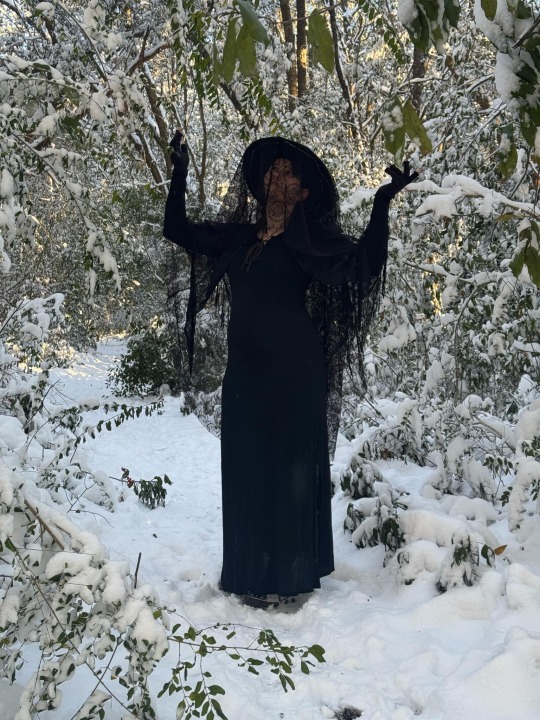


#the morrigan#witchblr#witchcraft#witch#celtic#witchy things#gothic#snow#snow in the south#snow in florida
2 notes
·
View notes
Text

Celtic mythology has a couple feminine entities that are associated with crows and ravens. Unfortunately, Celtic people rarely wrote about themselves. The first mention of the Celtic people was by Greek authors in 540 and 424 BCE. The Greeks knew them as Keltoi, Keltai, or Galatai. Romans provided the most valuable information on the Celtic people who knew them as Celti, Celtae, and Galli. There is no telling what the Celtic people called themselves, but the name “Celts” is a modern term to describe tribes of people who lived during the Iron Age (1200 BCE to 550 BCE). Early sources of the Celts placed them in western Europe and near the headwaters of the Danube River. They have also been traced to central and eastern France, south Germany, and into the Czech Republic.
Celtic mythology includes mythology from Ireland, the Welsh, the Gauls, and parts of Britain. Wales is seen as a Celtic nation but during the 1st century BCE and CE, specific tribes and leaders were observed. These tribes include Ordovices (northwest), Deceangli (northeast), Demetae (southwest), and Silures (southeast). It is believed that Celts arrived on the shores of Britain around 1,000 BCE and remained there during the Iron Age, Roman Age, and post Roman era.
Let us begin with Macha (MA-ka). Macha seems to have the least to do with ravens and crows outside of her name meaning raven in Ancient Gaelic. Macha is associated with the crow, being described as a fury that revels among the slain. As seen in the myth of Cu Chulainn’s death, many heroes name their horses after Macha, with the assumption that the horses are being blessed by Macha. She appears as the queen of Ireland under the name Macha Mong Ruad, or Macha Red-Mane for her red hair. This is assumed to be a title given to a woman who ruled Ireland in 377 BCE. Her most famous story involves her being a fae woman. In this story, she marries a man and tells him he cannot tell anyone of her. She becomes pregnant with twins, and he goes to the city to celebrate. While there he tells the king that his wife, Macha, is faster than the king’s horses. The king, insulted, insists she run against the horses. Macha wins the race but loses her kids’ lives. She then curses the king and his people to three times three times three generations of men having to suffer pregnancy pain for a week.
The Washer at the Fjord is Badb (pronounced Bive). Badb is the final of the trilogy of Na Morrigan. Her name, Badb or Bodb, comes from the Celtic bodua or “fighting lady.” She commonly appeared as a scald crow or carrion crow and was sometimes called Badh Catha or “the scald crow of battle.” The Washer at the Fjord is typically seen in the middle of rivers, usually of blood, washing the clothing and armor of people who are going to die. Even beyond the Washer at the Fjord, Badb is also seen as a Bean Sidhe or a banshee.
Morrigu is considered a Queen among the divinity of Irish mythology. She lives in the sighi, the fairy palaces of the Tuatha De Danann. The Tuatha De Danann are the people of the goddess Danu. Their original role in Celtic faith is unknown but depending on the tale they are typically gods, demigods, divine people, or fae people. She is a goddess of prophecy, war, battle, and wisdom. Many Celtic kings had summoned her into battle besides them, but she was picky with who she would stand by. She was generous to those who were hospitable with her. Typically, she could be seen as a beautiful woman (like when she tried to seduce Cu Chulainn), an ugly hag (like she appeared threefold during his journey to battle above), and a scald crow (typically when a warrior died or when she flew over battlefields, screaming). Na Morrigan is a triage of sister goddesses; Morrigu, Badb, and Macha.

1 note
·
View note
Text
“And the Raven, never flitting, still is sitting, still is sitting
On the pallid bust of Pallas just above my chamber door;”
The Raven, Edgar Allan Poe, 1845
“The raven himself is hoarse
That croaks the fatal entrance of Duncan
Under my battlements.”
Macbeth, Shakespeare, 1606
Ravens appear in multiple famous pieces of literature. They are commonly in the works of Edgar Allan Poe and Shakespeare. In 1899, Jemima Blackburn wrote Crows of Shakespeare where she presents an image of a crow or raven and connects it to a form of quotation from the Shakespeare. They are commonplace in gothic literature and even in The Game of Thrones; “Tyrion saw no bodies, but the air was full of ravens and carrion crows; there had been fighting here, and recently.” What do these inclusions usually represent? What do they symbolize?
There is a series of main themes that crows and ravens are associated with. The first theme is death. Ravens and crows are opportunistic eaters. They are commonly seen dining on carrion or dead animal flesh. They are frequently spoken about when talking about death or its foreshadowing. This is seen when Macbeth predicts the death of the King in Macbeth. This concept is seen as far back as 6th century BC when Aesop describes them as bringers of death or bad luck.
Ravens and crows are associated with insight. In Charles Dickens Barnaby Rudge: A Tale of the Riots of Eighty, 1894, a raven named Grip (after Dickens’ real life pet) is seen conversing with Barnaby Rudge and giving him insight that changes his perspective. In The Game of Thrones, Bran is visited by a three-eyed raven who tells him different insights such as “Chaos is a ladder.” Insights are deeply intuitive and accurate understanding of different parts of the world. Ravens are commonly seen in positions where they are watching the people and world around them.
Ravens and crows are frequently associated with curses and witchcraft in general. The Brothers Grimm are especially famous for this. In the short story The Raven (1905), the story begins with the main character saying to her child, “I wish you were a raven and would fly away, then I should have a little peace.” After this, the child turned into a raven. In another Brothers Grimm story The Seven Ravens (1812), a father curses his sons, turning them into ravens, and their sister has to go find them to turn them back. Krabat and the Sorcerer’s Mill by Otfried Preußler (1971) is the greatest example of ravens and crows being associated with witchcraft. In this novel, a boy with an apprenticeship at a mill turns into a raven to learn black magic.
There is the connection of ravens and crows with prophecy and divinity. In both Macbeth and Hamlet, the birds are used to predict an event, usually a tragedy. Conversely, Greeks attributed prediction of the future and prophecy to ten to twelve different bird species, one of which being ravens. A raven’s caws were considered an omen of death or disaster. This form of divination, as well as others, were prohibited in the Tosefta (late 2nd century). This literature is a compilation of Jewish oral law from the period of Mishnah. The specific passage regarding this law goes as follows:
“A ˇ ʒʧʔʰ ʍʮ (menahesh=diviner) is one who says: So and so’s bread has fallen out
of his hand; his staff has fallen out of his hand; his son after him; a raven
has called; a dog has barked; there was a serpent on my right side, or a fox
on my left side; a deer has crossed the road before me. Do not begin with
me because it is morning, and it is the new moon, and it is conclusion of
the Sabbath.”
Another Jewish word of literature regarding divination came from Nahmanides (birth name Moses ben Nachman, 1194-1270), an influential member of the kabbalistic community and commentator on the Torah and Talmud who also went by Ramban. In his commentary on Deuteronomy 18.9, “When thou art come into the land which Jehovah thy God giveth thee, thou shalt not learn to do after the abominations of those nations.” Ramban speaks that while the Torah forbids divination, the practice shouldn’t be completely ignored or invalidated:
“The diviner is he who observes the birds using their wings or chirping […]
and many scholars dispose themselves with regard to these enchantments
by saying that there is no truth in them whatsoever, for who tells the raven
or the crane what will happen? But we cannot deny matters publicly
demonstrated before the eyes of witnesses. Our Rabbis also acknowledged
their existence, as they have said in [Midrash] Exodus Rabbah (Lev. 32.2)”
The most interesting and different symbolism that ravens and crows can represent is foolishness. Aesop (?-564 BC) was a Greek storyteller and fabulist (a person who composes fables). He wrote the story The Fox and The Crow, where a crow is seen eating a piece of meat and a fox steals the meat from her, commenting that her voice is beautiful, but her wit is lacking, which is not typically true of the clever birds.
1 note
·
View note
Text

Cu Chulainn, also known as the Hound of Ulster, is a great hero of Irish mythology. He is known for his vicious rages and inhuman, supernatural strength. When Cu Chulainn was approached by the Morrigan, looking to offer him her favor, he refused her. Many of his mythologies involve the Great Phantom goddess and her sisters.

There are a couple cards in my favorite deck to the Morrigan, Oracle of the Morrigan, including the card Cu Chulainn, Fate, and Forgiveness. The first card represents arrogance, blindness, and illusions. He believed he was untouchable, undefeatable, even with the disfavor of the Morrigan. Fate represents the unavoidable, fated. This is based off the mythology of his fate. The final card Forgiveness is based on how the Morrigan tricked Cu Chulainn into healing her by offering him the milk she had to heal him.
Cu Chulainn is one of my favorite Irish heroes. I enjoy working with him in the gym. His energy inspires me to be stronger and to work harder towards my fitness goals.

3 notes
·
View notes
Text
A Guide To Shape-Shifting

Shape-shifting has long captivated the human imagination, holding a prominent place in the realms of witchcraft and the occult. In fact, the myth of the shape-shifting witch can be found in folklore around the world and across multiple cultures, from the British Isles to the Americas to Asia and Africa. Witches were reported to turn into rabbits, cats, deer, mice, owls, ravens, and wolves. Shape-shifting is an intriguing practice that involves altering one's physical form, or at least one's perception and is often associated with mystical abilities and spiritual connections.
What Is Shape-Shifting?
Shape-shifting, in the context of witchcraft refers to the belief and practice of altering one's form or perception through magick and ritual and can take place in the Otherworld or on our current astral plane, depending on the needs of the witch. It encompasses the idea of undergoing a physical or metaphysical transformation, allowing witches to embody different beings, animals, or even objects. Often times this occurs when the witch wears the body of an animal, we know literal transformation is not possible, but it can certainly happen on an energetic or spirit level. This can occur in one of two ways: the witch's spirit transforms into the spirit of an animal or the witch's spirit 'rides' a living animal or external spirit on the physical plane or in the Otherworld. In either case, both are considered shape-shifting and can be used for the same purposes.
Some History
By the 13th century, it was widely believed witches could turn into animals at will. Witches were believed to turn into hares, toads, dogs, cats, and other animals to steal from their neighbors, curse livestock, and otherwise create mischief and mayhem. In many cases, harm done to the animal form caused similar wounds to the human.
In 1649, John Palmer of St. Albans, England confessed to transforming into a toad in order to torment his neighbor. The neighbor reportedly kicked the toad and Palmer complained of sore shins afterward. Similar stories appear in American folklore, including Aunty Greenleaf who was said to take on the form of a white doe to torment her neighbor's livestock. When the doe was shot with three silver bullets, Aunty Greenleaf was said to later die with three silver bullets in her spine.
Of course shape-shifting myths and folklore don't end there. We also have the Navajo skinwalker, the American loup-garou, Korean kumiho, Japanese yokai, the Kitsune, and the Mexican La Lechuza.
Famous incantations come from Isobel Gowdie during the 17th century witch trials. During her confessions, Gowdie named two charms one for transforming into a hare and and one for transforming back into a woman.

To Transform Into A Hare:
"I shall go into a hare
With sorrow and such a meickle care;
And I shall go in the Devil's name
Ay while I come home again."
To Transform Back:
"Hare, hare, God send thee care.
I am in a hare's likeness now,
But I shall be in a woman's likeness even now."
Other witches reported similar shape-shifting incantations as seen below.
To Transform Into A Cat:
"I shall go into a cat,
With sorrow and such a black shat;
And I shall go in the Devil's name,
Ay while I come home again."
To Transform Into A Crow:
"I shall go into a crow,
With sorrow and such a black thraw;
And I shall go in the Devil's name,
Ay while I come home again."
Modern Uses Of Shape-Shifting

In contemporary witchcraft, shape-shifting has taken on metaphorical and symbolic significance. Modern witches utilize shape-shifting as a tool for personal growth, empowerment, and self-discovery. Through the exploration of different archetypes and primal instincts, witches seek to deepen their understanding of themselves and their connection to the natural world, develop a relationship with an animal guide or totem, or even gain new perspectives on a problem. Shape-shifting becomes a means to tap into hidden aspects of the psyche and to embrace transformative experiences. This can take many forms, including calling upon different animal spirits during spellwork, meditating on different animal aspects, working with animal spirits, journaling, ritual dances, etc.
Shape-shifting also shares a deep connection with shamanic journeying and hedge riding, a practice in which the witch traverses the different realms of the Otherworld for spiritual insight and healing. Within hedge riding and othet shamanic traditions, shape-shifting serves as a means to enter other dimensions, communicate with spirits, and tap into their wisdom and attributes. By assuming the form of a particular animal, the shamen can embody ita qualities, accessing unique perspectives and guidance on their journey. An animal form is also taken often as a form of protection during otherworldly travel, as animal spirits are often able to traverse undetected, acting as a form of invisibility, much like Celtic fith-fath incantations. An animal form also allows the witch to travel more quickly and in some cases, access areas previously unreachable, such as high mountain tops, deep within an ocean or lake, or even borrowing underground or into tight spaces.
How To Shape-Shift
Modern witches engage in shape-shifting through various techniques and practices. Visualization exercises play a significant role, where witches create vivid mental images of their desired form or archetype, often coupled with ritual work such as wearing animal skin/bones, dancing, drumming, or incantations. Through meditation, yoy can enter a state of deep focus and receptivity, allowing yourself to embody the essence and qualities of the chosen form. Energy work such as harnessing personal energy or working with elemental forces, can serve as a catalyst for the transformation, although most witches find it easier to use a mask or skin, or use an ointment to prompt the change. Needless to say, there are multiple approaches to shape-shifting and you need to experiment to find which method works best for you. Below are several ways to engage in shape-shifting from both folklore and modern witchcraft.
• Incantations And Charms- This is probably one of the most commonly cited historical ways to shape-shift, with the incantations from Isobel Gowdie and her fellow witches being cited most often. These incantations can be modernized and adapted to turn you into any animal you desire. Since most witches do not incorporate "God" or the Devil in their craft, these titles can be changed to reference deities or the forces you believe in such as Lord/Lady, Horned God, Hekate, Lilith, etc. Pagan musician Damh the Bard does an excellent job of this in his "Fith Fath Song" where he says "I shall go as a wren in spring
With sorrow and sighing on silent wing
And I shall go in our Lady's name
Aye, til I come home again
Then we shall follow as falcons grey
And hunt thee cruelly for our prey
And we shall go in our Horned God's name
Aye to fetch thee home again
Then I shall go as a mouse in May
Through fields by night and in cellars by day
And I shall go in our Lady's name
Aye til I come home again
Then we shall follow as black tom cats
And hunt through the fields and the vats
And we shall go in our Horned God's name
Aye to fetch thee home again... "
Of course writing your own incantations works just as well, if not better, than using others' words.

• Wearing Animal Skins, Bones, Or Masks- Apart from incantations, many witches engage in shape-shifting by animal skins, bones, or masks to encourage a transformation. This is often coupled with ritual dancing and drumming until an altered state of consciousness is reached. In Call of the Horned Piper, Nigel Jackson describes such a ritual. In order to shape-shift, the initiate would undergo a symbolic death by undressing and crossing a lake or other body of water. Upon arriving on the other side they would don a wolf skin or belt and enter into an altered state of consciousness to "be projected forth into the form of a wolf". This same practice can be replicated with any animal pelt, bone, or mask, using a cold shower as the bridge to 'death' should you not have access to a river or lake and privacy.
• Trance, Meditation, and Visualization- Reaching an altered state of consciousness coupled with one or both of the aforementioned methods is the key to actual transformation. Reaching an altered state of consciousness can be done in a variety of ways, including ritual dancing, drumming, humming, consuming psychoactive plants, or using ointments. The methods used are essentially the same as hedge-riding, however the goal of reaching the trance state is to shape-shift. With that intention firmly in your mind, you can visualize yourself shifting into your animal form, your consciousness slowly becoming that of an animal. You may find walking/crawling on all fours, growling, hissing, or otherwise behaving like the animal aids in this transformation. Become the animal you wish to transfrom into.
If you are looking to shape-shift while hedge-riding, visualizing the shift, reciting an incantation, and donning your animal garb within the Otherworld will also work. Unlike on our plane, you won't need to shift your consciousness again, as that has already occurred. While you don't necessarily need anything physical to do this, having real animal remains or a mask on your person prior to hedge-riding will greatly aid you in your work on the astral plane.
When first starting out, start small, shape-shifting for very short periods of time. Experiment with a variety of methods, combining them into a ritual that works for you.
Shape-Shifting Safety
There are dangers to shape-shifting into an animal form. This includes not being able to return to your body because tou have forgotten you're human, forgetting which realm you belong to, being captured, injured, or killed within the Otherworld or while riding a live animal. There are many tales of witches traversing the world as an animal and being injured only for the same wounds to appear on the witch's human form. These injuries sometimes resulted in the death of the witch, so be mindful of hazards while shape-shifting.

What You Can Do To Protect Yourself
1. Set clear and firm boundaries and time limits for travel. Setting an alarm or using a musical cue can help pull you back from a trance.
2. Have a spotter who can help rouse you should you not come back when originally planned.
3. Have a safe word or incantation that when spoken pulls your spirit into your body.
4. Use a red witch's thread tied around your finger or arm to anchor your spirit to your physical body. If you get lost, follow the thread back to your body.
5. Carry or wear protective charms that will prevent your spirit from being stolen or harmed while in the Otherworld. Your familiar or household pet can also act as a protector of your body, sitting on or near you during shape-shifting to ensure nothing else tries to inhabit your body.
6. When you are finished, make sure you are completely grounded in your human body.

Shape-shifting in witchcraft remains an enigmatic and alluring practice, intertwining myth, history, and contemporary spirituality. It offers a gateway to explore the depths of our own selves, connect with the primal forces of nature, and embark on transformative journeys of self-discovery. Whether through the exploration of archetypes, communion with spirits, or embracing the hidden aspects of our being, shape-shifting provides a mystical transformation that resonates with the essence of true witchcraft.
679 notes
·
View notes
Text
Introduction post I suppose!
I am C Rivera, author of Crows and Ravens: Mystical and Magical Messengers, unfortunately only available on Amazon or two local shops by me. I am a tarot reader, social worker, Devotee of the Morrigan, Lilith, and others, and in general kinda off putting. I can be found on most social media at the same username I use here.

2 notes
·
View notes
Text
Ominous statement generator
Birth Month:
Jan - The weathered bone
Feb - The stained glass window
Mar - A wolf’s howl
Apr - The fog on the moors
May - The sanctuary of the abandoned cathedral
June - The bloodied locket
July - A scream from within the forest
Aug - The churning sea
Sept - The fire’s last embers
Oct - An old clocktower
Nov - A mountain’s wind
Dec - A saint’s weeping
Color of The Top You’re Wearing*:
Red - smells strongly of flesh and rot.
Orange - is set afire when you look toward it.
Yellow - causes a ringing in your head that grows as you approach it.
Green - offers to make a pact.
Blue - demands a sacrifice.
Violet - causes blood to drip from your eyes.
White - whispers hymns of the old gods gently in your ears.
Grey - hums with grief.
Black - pardons you of your sins.
*if patterned/multicolored, choose the closest base colour, or most prominent.
based off this post
60K notes
·
View notes
Photo


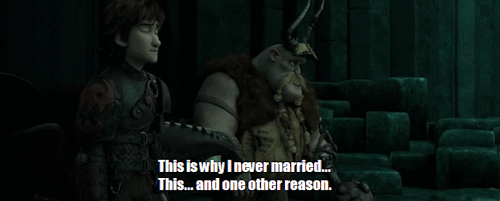


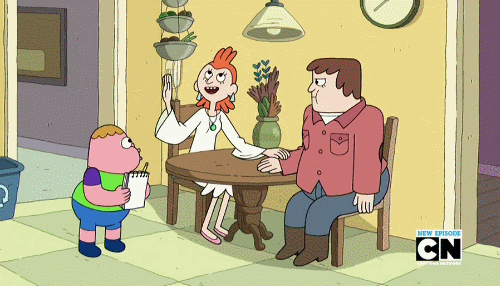
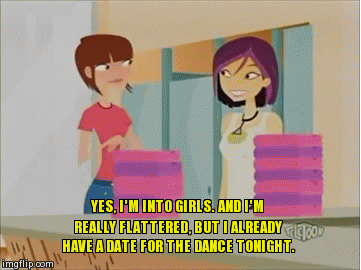


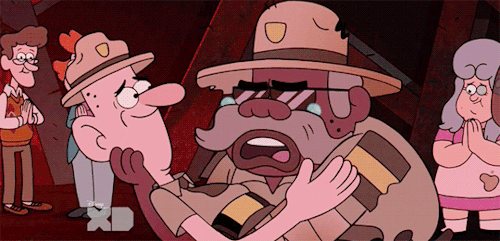
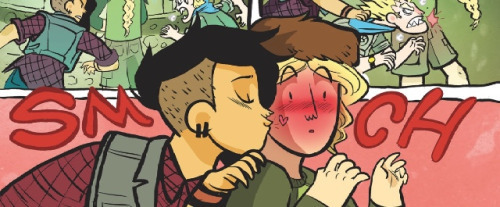
Reblog if you support romantic same sex relationship themes and gay characters in childrens entertainment!
394K notes
·
View notes

